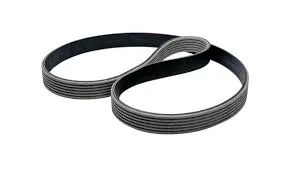- Arabic
- French
- Russian
- Spanish
- Portuguese
- Turkish
- Armenian
- English
- Albanian
- Amharic
- Azerbaijani
- Basque
- Belarusian
- Bengali
- Bosnian
- Bulgarian
- Catalan
- Cebuano
- Corsican
- Croatian
- Czech
- Danish
- Dutch
- Afrikaans
- Esperanto
- Estonian
- Finnish
- Frisian
- Galician
- Georgian
- German
- Greek
- Gujarati
- Haitian Creole
- hausa
- hawaiian
- Hebrew
- Hindi
- Miao
- Hungarian
- Icelandic
- igbo
- Indonesian
- irish
- Italian
- Japanese
- Javanese
- Kannada
- kazakh
- Khmer
- Rwandese
- Korean
- Kurdish
- Kyrgyz
- Lao
- Latin
- Latvian
- Lithuanian
- Luxembourgish
- Macedonian
- Malgashi
- Malay
- Malayalam
- Maltese
- Maori
- Marathi
- Mongolian
- Myanmar
- Nepali
- Norwegian
- Norwegian
- Occitan
- Pashto
- Persian
- Polish
- Punjabi
- Romanian
- Samoan
- Scottish Gaelic
- Serbian
- Sesotho
- Shona
- Sindhi
- Sinhala
- Slovak
- Slovenian
- Somali
- Sundanese
- Swahili
- Swedish
- Tagalog
- Tajik
- Tamil
- Tatar
- Telugu
- Thai
- Turkmen
- Ukrainian
- Urdu
- Uighur
- Uzbek
- Vietnamese
- Welsh
- Bantu
- Yiddish
- Yoruba
- Zulu
Aug . 01, 2024 05:53 Back to list
Calculating the Expenses Involved in Replacing Your Vehicle's Fan Belt for Optimal Performance
Understanding the Cost of Fan Belts A Comprehensive Guide
Fan belts, also known as serpentine belts or accessory drive belts, are crucial components in many vehicles and machinery. They play a vital role in various functions, including powering the alternator, water pump, power steering pump, and air conditioning compressor. Given their importance, understanding the cost of fan belts and what influences their price is essential for both vehicle owners and mechanics.
Factors Influencing Fan Belt Costs
1. Material Quality The cost of fan belts can vary significantly based on the materials used in their construction. Higher quality materials, such as EPDM (Ethylene Propylene Diene Monomer) rubber, often result in a longer-lasting belt and better performance. While these premium belts may come with a higher price tag, they offer durability and resistance to wear and environmental factors, making them a wise investment in the long run.
2. Brand The brand of the fan belt also plays a significant role in its cost. Well-known manufacturers like Gates, Dayco, and Continental may charge more for their products due to their reputation for quality and reliability. Conversely, lesser-known brands might offer lower prices, but they may compromise on quality and longevity, potentially leading to higher replacement costs in the future.
3. Vehicle Make and Model The specific vehicle model can greatly influence the price of fan belts. For instance, belts for luxury or exotic cars may be priced higher due to limited availability and specialized manufacturing processes. Conversely, belts for more common vehicles tend to be more competitively priced because of the larger market and increased competition.
fan belt cost

4. Labor Costs for Installation In addition to the price of the fan belt itself, vehicle owners should factor in the cost of labor for installation. The complexity of the installation process can vary widely; some fan belts are easy to replace, while others may require significant disassembly of engine components. As a result, labor costs can significantly increase the overall expense of replacing a fan belt.
5. Availability and Market Demand The availability of a specific fan belt can also impact its price. If a belt is difficult to find due to low inventory or high demand, prices may surge. Seasonal fluctuations and economic factors can contribute to these changes, and it's always wise to monitor supply levels when planning any repairs.
Cost Range
On average, the cost of fan belts can range from $25 to $100 or more for the part alone, depending on the factors outlined above. When including labor costs, total expenses can rise to between $100 and $300. It's essential to shop around and compare prices from various suppliers and mechanics to ensure you're getting a fair deal.
Conclusion
Understanding the costs associated with fan belts is important for any vehicle owner. By considering the factors influencing the price—such as material quality, brand reputation, compatibility with the vehicle, labor costs, and market conditions—you can make informed decisions that save you money in the long run. Regular maintenance and timely replacement of fan belts can prevent further damage to your vehicle, ensuring its optimal performance. Always consult with a trusted mechanic or automotive professional to choose the right fan belt for your needs and ensure a proper installation. Investing in quality belts and maintenance can lead to a smoother, more reliable driving experience for years to come.
-
Upgrade Power Steering Pump Belt for Smooth, Quiet Operation
NewsAug.27,2025
-
Precision Timing Belt & Chain: Engine Performance & Durability
NewsAug.26,2025
-
Precision Lathe Drive Belts: Durable & Reliable Performance
NewsAug.25,2025
-
84.5 Serpentine Belt: Durable & Precision Fit for Your Engine
NewsAug.24,2025
-
Premium Ribbed Drive Belts for Quiet Power Transmission
NewsAug.23,2025
-
High-Performance Vehicle Timing Belt for Engine Precision
NewsAug.22,2025

